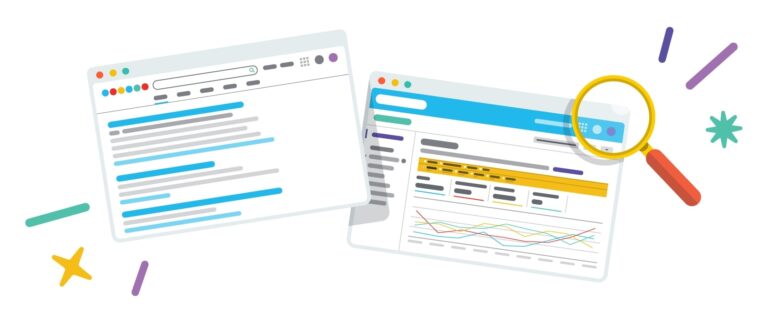Modern consumers are shopping across channels at their convenience, any time, and anywhere. They’re using multiple sources to research product information, such as in-store displays, retailer websites, online review sites, marketplaces, and social media. They also embrace new technologies to shop faster and easier.
According to McKinsey, “more than one-third of Americans have made omnichannel features such as buying online for in-store pickup part of their regular shopping routine since the pandemic, and nearly two-thirds of those individuals plan to continue. […] Most Gen Z consumers don’t even think in terms of traditional channel boundaries, and they increasingly evaluate brands and retailers on the seamlessness of their experience.”
But creating a seamless omnichannel shopping experience isn’t easy.
It requires retailers to understand exactly what consumers need, how they want their problems to be solved, and what they expect when they shop. It also forces brands to upgrade their technologies, product offerings, customer service, etc.
Without a well-developed omnichannel strategy, brands can end up wasting their investments and losing customers.
In this article, you’ll learn about the critical steps needed to build seamless shopping experiences.
1. Developing a Thoughtful Omnichannel Strategy
Many retailers race to implement omnichannel commerce without knowing what exactly it means, what parts to prioritize, and if they’re ready for it. They don’t have a strategy or a set of principles that help them design excellent shopping experiences and ensure that those experiences please customers. They also have limited knowledge of online platforms and lack necessary insights into the ecommerce ecosystem.
The first step in building a great shopping experience is understanding the type of experience you want to deliver. Then, you have to focus on implementation.
How to Build and Implement Your Omnichannel Strategy
When it comes to building your strategy, it needs to be well-developed before you can begin implementation. Therefore, you should:
- Make sure your strategy aligns with your brand purpose, mission, and vision, and provides the values customers expect to get;
- Then, prioritize the experiences with the greatest potential impact on customer behaviors; and
- Determine the processes and technologies you need to deliver those experiences.
McKinsey also suggests that brands should “create agile, cross-functional teams that have true ownership of their projects, deep technology expertise, and a culture of design thinking and continuous improvement.”
2. Having a Deep Understanding of Customers
Acquiring a 360-degree view of customers is a must for a successful omnichannel retail implementation plan. Retailers need to carry out an in-depth analysis of purchasing behaviors, changes in expectations, and platforms where customers hang out.
How to Better Understand Your Customers
To better understand your customers and their behavior, you should:
- Use survey tools, interviews, and customer focus groups to validate the current customer experience;
- Ask them what they think about your website and services; and
- Give them the opportunity to tell you how you can better serve them.
Also, conduct a thorough audit of the customer journey to find out which communication options you’re giving your target customers and how they feel throughout the journey. Once you gain greater visibility into customer personas, you can segment them and design an end-to-end purchasing path that puts their needs at the center.
3. Ensuring Consistent Shopping Experiences Across Your Brand’s Channels
As mentioned prior, you should review your mission, vision, and purpose when creating an omnichannel strategy.
The reason is simple — today’s consumers connect everything about a brand to inform their decision. They look for the messages the brand shares on the website, social media, online ads, and other platforms. If your customers’ experiences aren’t aligned with your brand’s promise, their trust in you will erode, as emphasized by Gartner.
How to Maintain Brand Consistency
To maintain brand consistency across multiple channels, you should:
- Clearly define your brand personality;
- Develop brand style guidelines;
- Implement cross-channel communication;
- Gather feedback from every channel; and
- Perform regular audits to ensure your messaging on all channels stay on-brand.
Having said that, you should tailor your brand voice to individual channels as every channel has a different audience and works in a different way. This will help you easily engage with customers on each platform and eventually drive more conversions.
4. Offering Your Customers Engaging, High-Quality Product Content
Poor product content leads to many problems — high returns, high shopping cart abandonment rate, low brand trust, and even worse, bad reputation. In the eyes of modern consumers, a product is only as good as the information associated with it.
In the 2020 Retail Reimagined survey, Periscope by McKinsey found that informative product descriptions and clear product images are one of the top three factors for a great online shopping experience, increasing in importance by 12% to 23%, from pre- to post-shutdown.
Salsify’s 2021 Consumer Research report discovered the same finding; specifically, 86% of consumers rely on digital shelf experience to judge product quality. Without a doubt, offering high-quality product content on product detail pages (PDPs) is key to building a seamless shopping experience.
How to Offer Next-Level Product Content
The best practice to take your PDPs to the next level is to use enhanced product content like:
- 360-degree spins;
- Comparison charts; and
- Visual configurators.
This type of content offers customers a great way to view a product from multiple angles and decide if it matches their needs.
When customers find it convenient to shop from your store, they’ll likely continue to buy from you and share their experience with others. Happy customers lead to more.
5. Leveraging Personalization Across Channels
A Gartner survey of more than 3,000 customers conducted between December 2020 and January 2021 revealed that 46% of customers can’t tell the difference between most brands’ digital experiences.
Sailthru and Liveclicker’s 2021 Retail Personalization Index customer survey also reported that about 62% of consumers considered personalizing retail experiences, either online or in the store, as important.
As more consumers are looking for products that fit their needs and personal values, retailers have a huge opportunity to meet this demand with the right targeting and content.
How to Use Personalization Effectively
Personalization is a powerful tool, but only when used effectively. For example, your brand can:
- Create different email automation flows for different customer segments instead of a general flow sent to all audiences in the database;
- Use in-store digital experience to engage shoppers while they’re interacting with your products; or
- Develop personalized reward programs to deliver more value and strengthen customer loyalty.
Enhance Your Shopping Experiences for Digital Shelf Success
To satisfy modern consumers, retailers should make shopping experiences easy, fast, intuitive, and seamless across touchpoints. In most cases, success requires creating a well-designed omnichannel plan, a multidimensional picture of target customers, consistent messaging and branding across channels, personalization capabilities, and an excellent ecommerce presence.
If you’re looking for a definitive guide to product page optimization to enhance your ecommerce experience, download our free product page toolkit.


![The Complete Product Page Toolkit [Download] | Salsify](https://thegateway.net.au/wp-content/uploads/2021/05/the-complete-product-page-toolkit-download-salsify.png)



